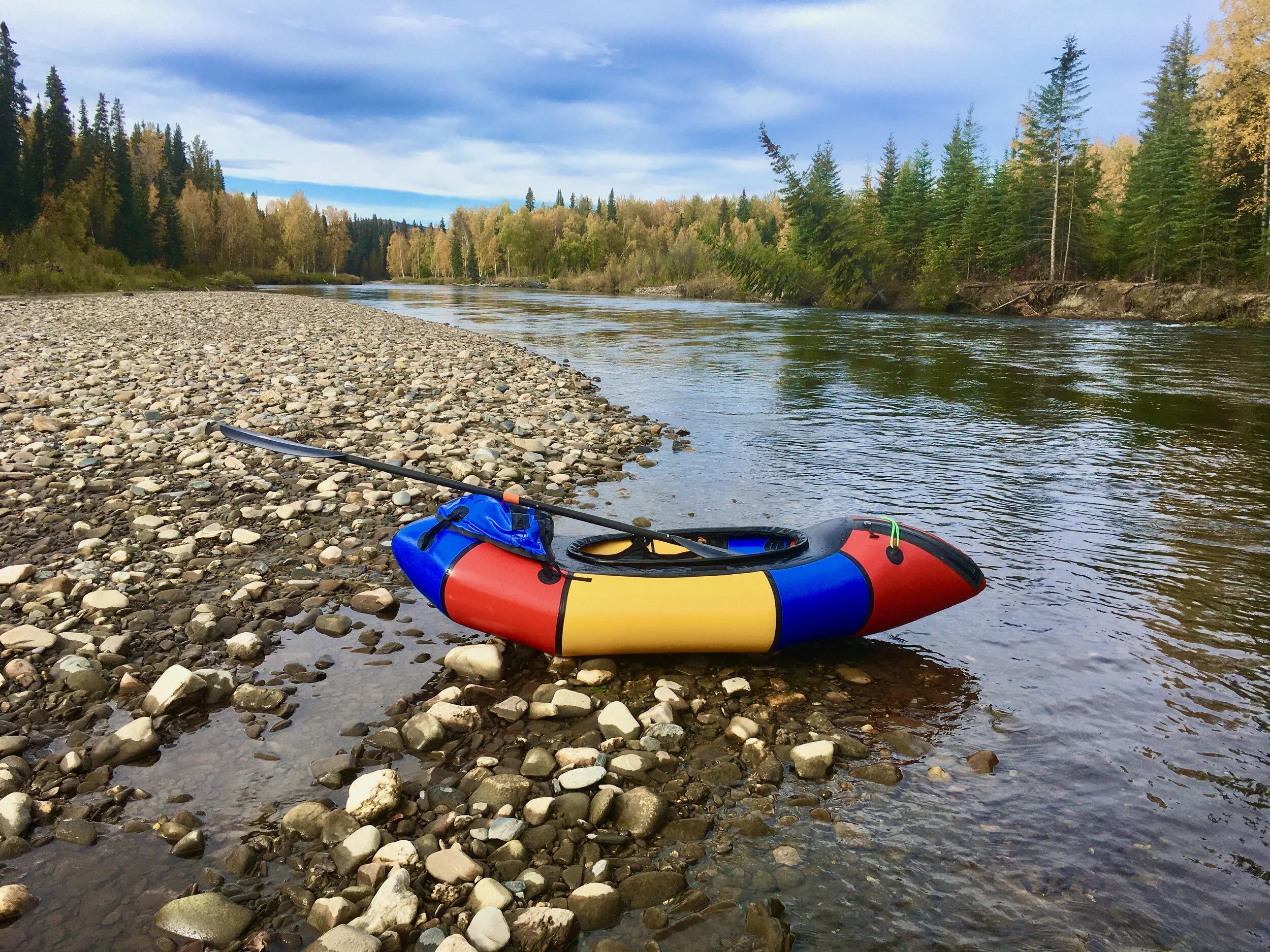By Sarah Clement
We’ve been conducting field science and practicing art on glaciers and in coastal ecosystems in Alaska since 2012, and on our next adventure, we’re heading out on the river! Girls in the Forest is our newest expedition, and will explore wildfire and boreal forest ecosystems via packraft near Fairbanks, Alaska. This new expedition is part of Fire & Ice, a large, collaborative program at the University of Alaska Fairbanks that supports research and outreach on boreal fires and ice in the ecosystem, and that also houses our Girls on Water program. Expedition participants will learn how to navigate rivers to access remote burned forests, studying the necessary and important ways wildfire contributes to the health of the ecosystem. Traveling on a river, by packraft, will allow the Girls in the Forest team to learn about boreal plants, soils, wildlife, and waterways and see more of the boreal forest landscape than traveling only by foot.
The first step in launching a new expedition is to find the location! An ideal route includes access to burn sites (preferably a variety of sites that have burned at different times in the last few decades); water that is appropriately challenging for participants who may have never traveled on a river before; and camping spots for up to 12 people. Several of our program staff and volunteers pored over maps of local rivers and burn perimeters and read a dozen trip reports, coming up with two potential spots: a remote stretch of the lower Chatanika River, a river famous for its location in historic gold mining country, and the Upper Chena River, known for its views, fish, and wildlife.
Once we had identified two potential locations, it was our responsibility (and great pleasure!) to get out of the office for a few days to check out the routes for ourselves. On an unexpectedly warm and sunny weekend in late August, we pushed off from shore for a two-day float down the Lower Chatanika and a hike out to the top of a local hill called Murphy Dome. On paper, the Lower Chatanika looked promising: it’s a mellow, winding river with no rapids and very little current, meandering through interior Alaska forests, bogs, and tundra. We decided to float to Murphy Dome and hike out about six miles on an ATV trail through forest that burned in 2019, which would provide an exciting opportunity for participants to walk through the ash and see the tiny sprouting plants of a very recent burn in recovery. The hike out would offer a fascinating “peak experience” for the team as their final push to finish the expedition.
Finding spots to get out of the boats for a snack and stretching break on the Chatanika River was difficult! Photo Credit: Sarah Clement
Floating down the mellow, meandering Chatanika. Photo Credit: Sarah Clement
Although beautiful, we quickly determined the Lower Chatanika is not suitable for Girls in the Forest! The gravel bars that would have been ideal for camping at the beginning of the route soon gave way to steep, slippery banks that would make snack breaks and camping impossible for a large group of people. The mellow river was a bit too gentle and meandering for our purposes, which would make for long days of paddling on the water without much opportunity to practice fun boating skills. We left the Chatanika feeling grateful for the opportunity to scout and determine for ourselves that it would not work as a location for Girls in the Forest.
As summer faded into a rainy fall, we waited for a decent weather window to check out the Upper Chena. We drove up Chena Hot Springs Road on a chilly, gray September morning, stopping at several river access points to assess their suitability for launching an expedition of 12 people. Once on the river, the Chena offered exciting proximity to burns from 1950, 1959, 2002, 2003, 2013, and 2019, and we saw plenty of signs of wildlife like beaver, moose, and bald eagles. The water itself required some skills, and would be a fun challenge for beginner boaters. While the stretch of river we floated flowed through the Chena State Recreation Area, it is possible to imagine an expedition that continues into an even wilder stretch of river beyond that, and possibly all the way to Fairbanks!
Floating by a 2019 burn site on the Upper Chena River. Photo Credit: Joanna Young
We’re very excited to run our first Girls in the Forest expedition on the Chena River. Though Inspiring Girls started as a program to introduce high school girls to glaciology, we’ve grown to include other types of field science including oceanography, marine biology, geology, and now, wildfire ecology! We don’t yet know how the COVID-19 pandemic will impact our expeditions in 2021, but we look forward to launching Girls in the Forest when in-person programming is possible again.




